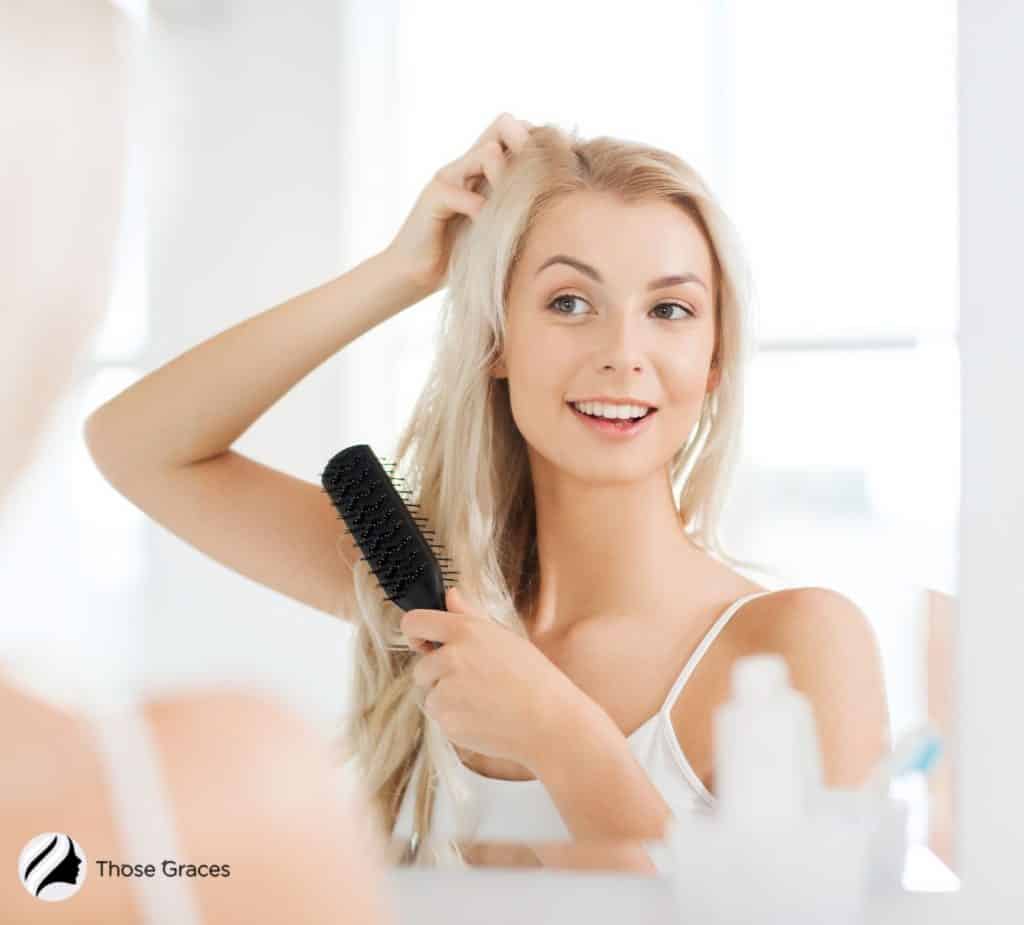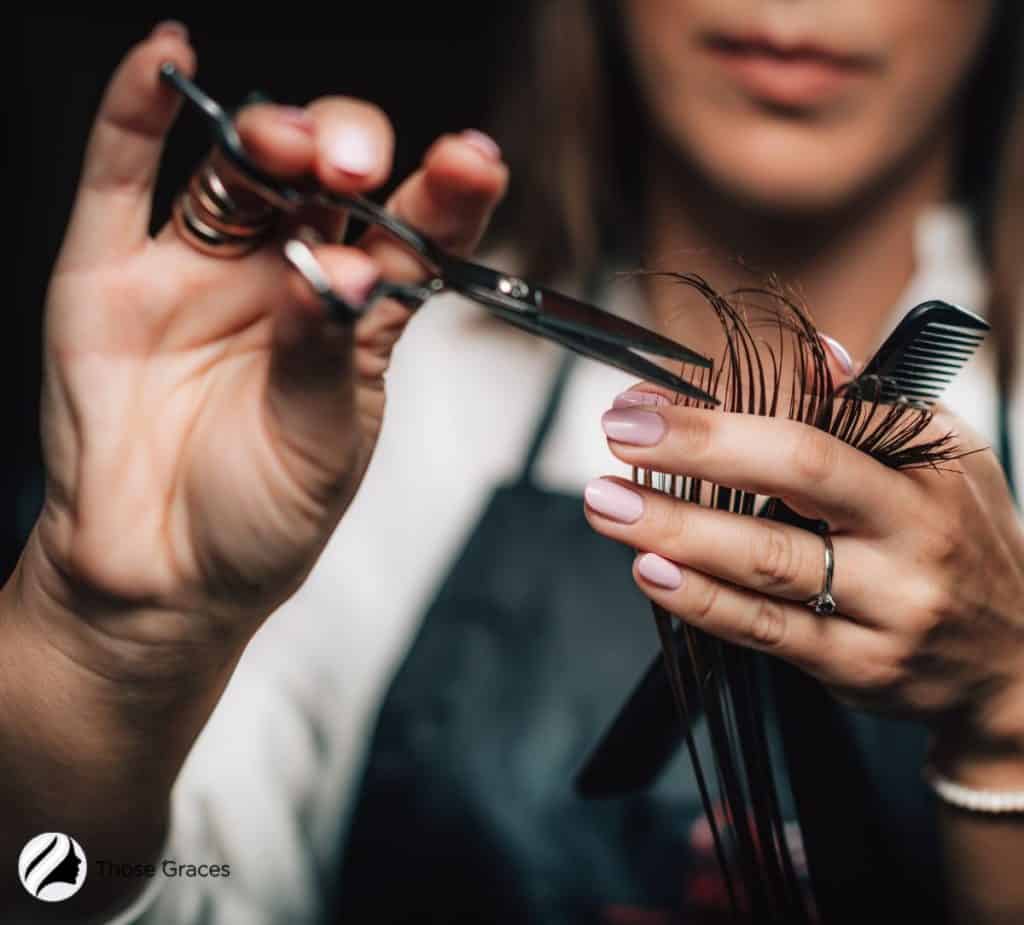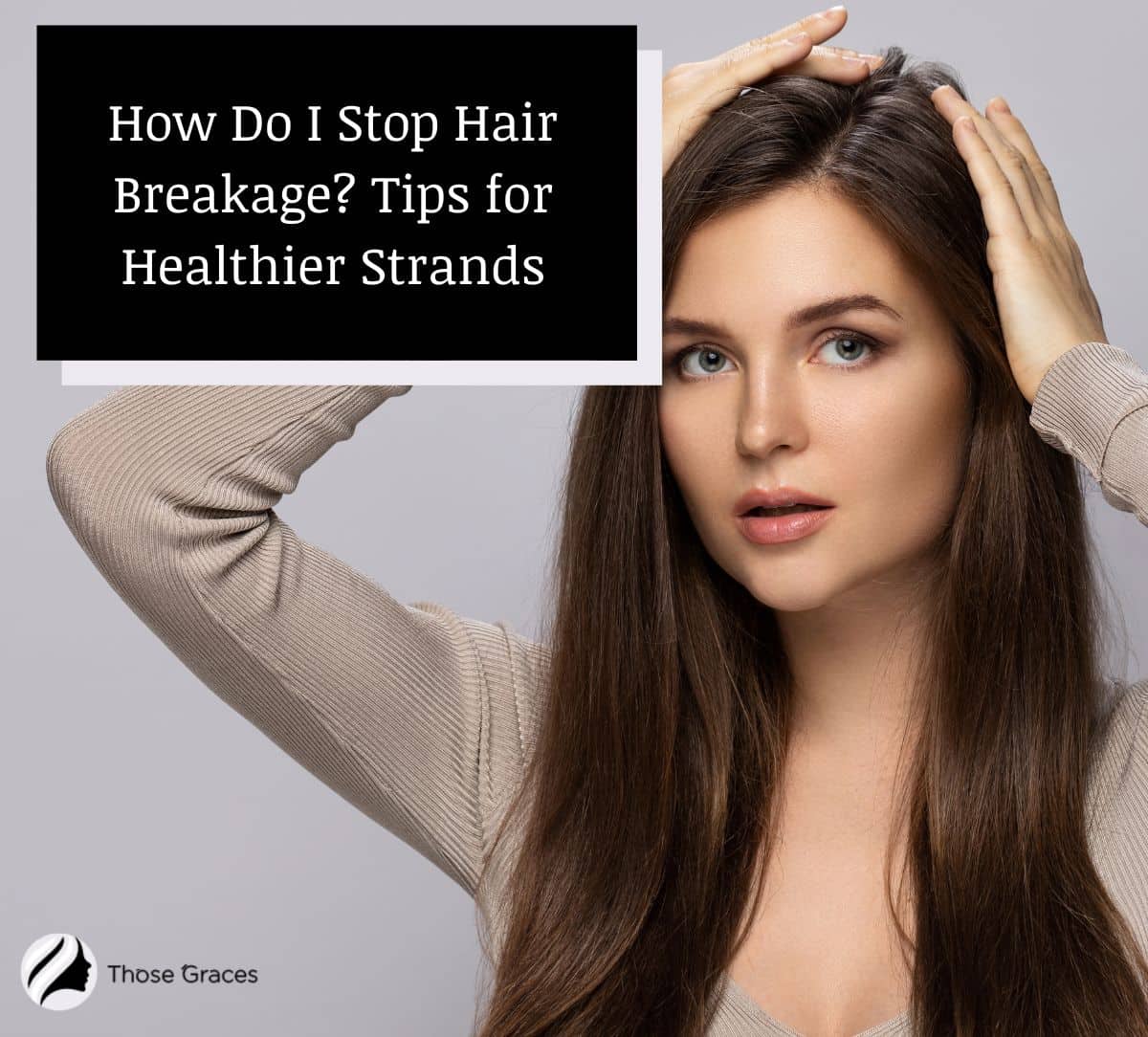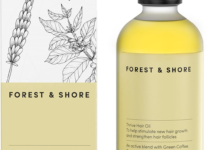Seeing broken hairs coating your hairbrush and wondering, “How do I stop hair breakage?” Scroll on [1]!
As a beauty expert, I’ve learned the secret – It starts by knowing the cause, and when I did, my clients were jumping for joy!
In this guide, you’ll learn the most effective methods for knowing why your hair breaks, how to solve it, and how to restore your the strength and continuity of your lovely locks!
So, keep reading to learn 9 tips for keeping your luscious locks break-free!
Key Takeaways
- Treat Your Hair with Care: Avoiding breakage starts with gentle care. Be kind to your hair during washing, combing, and styling to prevent unnecessary damage.
- Moisturize Regularly: Keeping your hair well-moisturized is key to preventing breakage. Make sure to use conditioner every time you shampoo!
- Eat Well and Use Specialized Products: Your diet plays a significant role in hair health. Eating nutrient-rich foods can strengthen your hair.
How Do I Stop Hair Breakage? 9 Tips for Healthier Strands
To stop hair breakage, it’s essential to identify the causes, such as heat styling or nutritional deficiencies, and address them.
Other effective strategies are combining protective hairstyles, using silk accessories, deep conditioning, and being gentle with your wet hair!
Let’s start with the basics!
Tip #1: Determine the Cause
Start by identifying factors contributing to your hair breakage. Common culprits include:

- Excessive heat styling that weakens hair
- Over-brushing or rough handling when wet
- Chemical processing like perms, relaxers, or color
- Pulling hair too tight in ponytails or braids
- Nutritional deficiencies or medical conditions
- Not properly conditioning after shampooing
- Environmental damage from sun, wind, and chlorine
Analyze your daily hair habits to pinpoint what needs adjustment to help minimize breakage triggers. Address the root factors first.
Tip #2: Handle Hair Gently
Rough handling is a top cause of split ends and breakage. Practice delicacy when washing, combing, drying, and styling fragile strands.
Use your fingertips to massage shampoo gently into the scalp instead of scrubbing harshly—Detangle hair patiently with a wide-tooth comb only when wet and conditioned.
Let hair air dry, or use a diffuser on low heat.
Avoid excessive brushing. Never yank through stubborn tangles. Use soft scrunchies without metal for ponytails. Treat your hair with care for thickness and health.
Tip #3: Deeply Condition
Shampoo washes away the oils that help keep hair supple and protected. Conditioner puts that moisture back. Make conditioning a daily priority for making hair less prone to breakage.
Shampoo only 1-2 times per week, only scrubbing the scalp area. Follow every shampoo with a rich conditioner covering strands fully. Allow it to penetrate for 3-5 minutes. Rinse thoroughly.

Replenish lipids and proteins inside the hair shaft through quality conditioners. Daily conditioning leaves hair stronger and more resilient.
For those interested in hair care, don’t forget to also explore topics like “hair breakage at the top of the head” and “how to get rid of puffy hair for guys” for comprehensive hair maintenance tips.
Tip #4: Avoid Too-Tight Styling
Certain hairdos put excessive tension on strands that can instigate breakage at stress points. Choose gentle styles without pulling too tightly.
Skip super-sleek, sharply pulled-back looks like severely high ponytails constantly. Opt for loose braids, low buns, and relaxed headband styles that don’t require immense tautness.
For special occasions, still exert care while styling. Set hair in rollers gently without tearing. Check for pin placement pulling hair too much. Prevent breakage from styles.
Tip #5: Check for Nutrient Deficiencies
Hair relies on key nutrients to remain strong and resilient. Brittle, breaking hair may indicate deficiency in vitamins A, B, C, D, and E, as well as iron, magnesium, zinc, and omega fatty acids, among others.
Load up on vitamin-rich foods like avocados, nuts, eggs, citrus fruits, fish, and leafy greens. Pop a daily multi to fill common nutritional gaps.

Consider specialized hair supplements with compounds like biotin, folic acid, and keratin for added insurance.
Proper nutrition fortifies hair and curbs breakage dramatically. Don’t overlook diet’s role in damage prevention and repair.
Tip #6: Use Targeted Treatments
Salon treatments and specialized products provide concentrated formulas that reinforce hair and discourage breakage intensely. Use them strategically as part of care.
Weekly, apply a repairing hair mask containing oils, proteins, and ceramides to strengthen strands.
Before heat styling, prep with a fortifying shampoo for damaged hair, plus a thermal protectant. Consider keratin smoothing or bond repair treatments between damage.
When hair needs concentrated TLC, proven treatments speed the recovery process and build bonds back better. Don’t be afraid to enlist some chemical help!
Tip #7: Dust Split Ends
While the goal is preventing breakage in the first place, staying on top of trimming split ends minimizes damage spread if breaks do occur. Schedule regular trims.
See your stylist to snip split ends every 8-10 weeks. In between appointments, twist small sections of hair to spot splits and carefully trim them yourself easily.
Eliminate them before they travel up the length.
Consistent, quick trims restore a healthy appearance and feel while stopping splits in their tracks. Keep up with the dusting diligently.

Tip #8: Hydrate Your Hair
Hydration is key for both your body and hair. Your body, including your hair, is made up of about 50%-60% water, so it’s crucial to keep it hydrated.
“Staying hydrated is vital for healthy hair. Make sure you’re drinking enough water every day,” advises a hair care expert from hairlust.com [2].
To tackle hair breakage, ensure your hair stays well-moisturized. Use a quality deep conditioning product and regularly moisturize your scalp to prevent dryness.
Also, be cautious when handling wet hair; avoid brushing or combing it when damp to prevent breakage.
Tip #9: Nourish Your Hair
Nourishing your hair externally is just as important. Applying natural oils like jojoba or almond oil can deeply condition and strengthen your strands.
These oils are excellent for locking in moisture, fighting dryness, and preventing breakage.
Think of these natural oils as your hair’s protective shield, safeguarding it from damage and keeping it well-hydrated.
By blending these healthy practices into your hair care routine, you’re setting the stage for healthier, more resilient hair.
Now, it’s time for a brief review from Dr. Rasya Dixit…
Got any questions? Then, skip ahead…
FAQs
1. What typically causes hair to break?
Identifying these factors is crucial for preventing further damage.
2. How often should I use conditioner to avoid hair breakage?
3. Does my diet affect my hair’s tendency to break?
Including foods rich in essential vitamins and minerals can improve the strength and health of your hair.
Conclusion
Figuring out “How do I stop hair breakage?” doesn’t have to be hard…
In fact, stop hair heartbreak in its tracks by being ultra-gentle, frequently conditioning, protecting from heat damage, monitoring nutrition, trimming splits, and safeguarding hair from drying environments.
Avoiding and minimizing breakage instigators keeps your strands where they belong – healthy and attached.
With diligent care and handling, you can grow thick, shiny, vibrant hair free of frustrating snaps and breaks.
Resources
1. Tidemand S. Hair Breakage Causes & Treatment: How to Stop Hair From Breaking Off [Internet]. Hairlust. 2022 [cited 2023 Nov 1]. Available from: https://hairlust.com/blogs/blog/severe-hair-breakage-causes-treatment
2. Chevlen D. How to Clean Your Hairbrush. The New York Times [Internet]. 2022 May 5 [cited 2023 Nov 1]; Available from: https://www.nytimes.com/wirecutter/reviews/how-to-clean-your-hairbrush/



